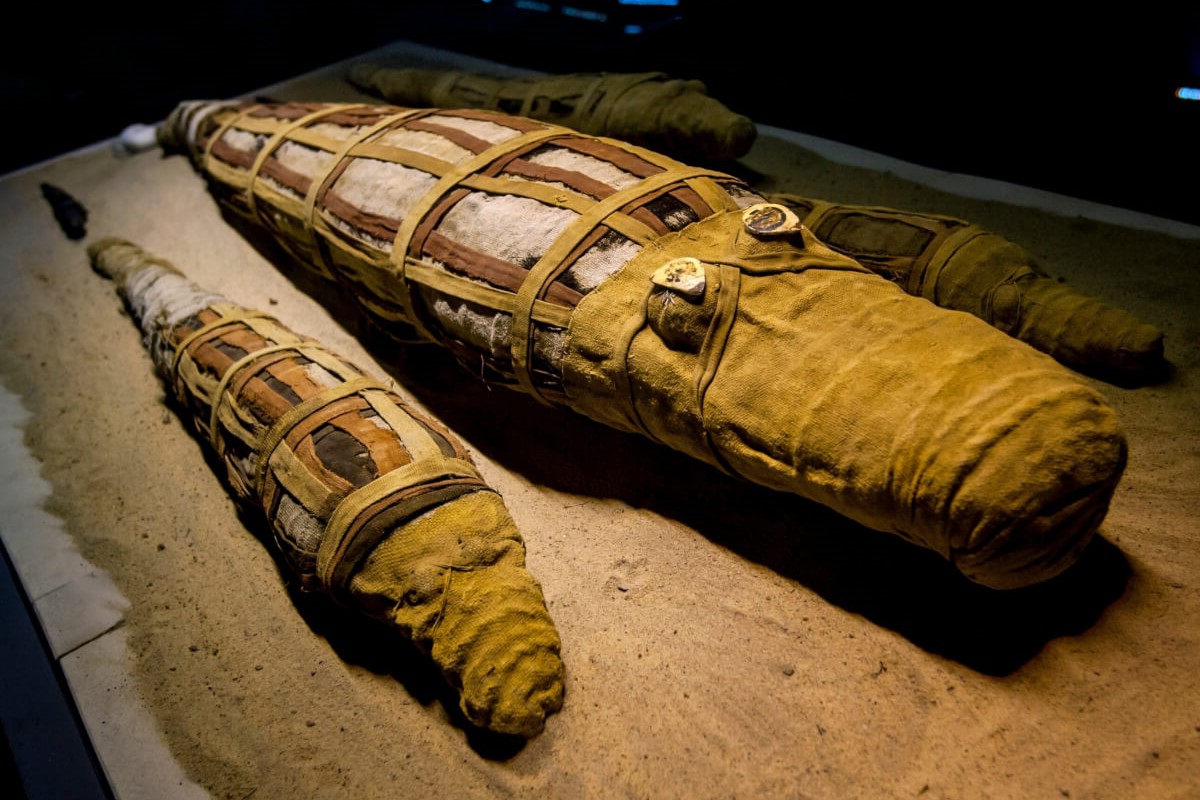
Did you know that ancient Egyptians mummified crocodiles? Yes, you read that right! These fascinating creatures were not just feared but also revered. Crocodiles held a special place in Egyptian culture, often associated with the god Sobek, who symbolized strength and protection. Mummifying crocodiles was a way to honor Sobek and seek his favor. These mummified reptiles ranged from tiny hatchlings to massive adults, sometimes even containing baby crocs inside the larger ones. Imagine discovering a tomb filled with these ancient, scaly guardians! Intrigued? Let's dive into 35 mind-blowing facts about ancient Egyptian crocodile mummies that will leave you amazed.
Key Takeaways:
- Ancient Egyptians mummified crocodiles as offerings to the god Sobek, symbolizing power and protection. The mummification process involved intricate steps, and crocodile mummies played a significant role in temple rituals and offerings.
- Crocodile mummies provide insight into ancient Egyptian beliefs and practices. They were believed to offer protection in the afterlife and symbolized the power of the Nile. Modern research has shed new light on this fascinating ancient tradition.
Ancient Egyptian Crocodile Mummies: A Fascinating Practice
Ancient Egyptians had a unique relationship with crocodiles, often mummifying these fearsome reptiles. This practice reveals much about their culture, beliefs, and daily life. Let's dive into some intriguing facts about these ancient mummies.
-
Crocodile mummies were offerings to the god Sobek, who was depicted with a crocodile head.
-
Sobek was associated with the Nile, fertility, and military prowess.
-
Crocodiles were both feared and revered, symbolizing power and protection.
-
Mummified crocodiles ranged from hatchlings to fully grown adults.
-
Some mummies were elaborately wrapped in linen, while others were simply dried out.
The Mummification Process
The process of mummifying crocodiles was complex and varied. It involved several steps to ensure the preservation of the animal for the afterlife.
-
The first step was to remove the internal organs, which were often placed in canopic jars.
-
The body was then dried using natron, a naturally occurring salt.
-
After drying, the crocodile was wrapped in linen strips, sometimes with amulets placed between layers.
-
Some mummies were coated in resin to further preserve the body.
-
The eyes were often replaced with stones or painted to give a lifelike appearance.
Crocodile Mummies in Temples
Crocodile mummies were not just buried; they played a significant role in temple rituals and offerings.
-
Temples dedicated to Sobek often housed mummified crocodiles.
-
Priests cared for live crocodiles in temple ponds, believing them to be incarnations of Sobek.
-
Upon death, these sacred crocodiles were mummified and placed in temple crypts.
-
Some temples had entire cemeteries dedicated to crocodile mummies.
-
Pilgrims visiting these temples would offer small crocodile mummies as votive offerings.
Archaeological Discoveries
Archaeologists have uncovered numerous crocodile mummies, providing insight into ancient Egyptian practices and beliefs.
-
The largest collection of crocodile mummies was found in the Faiyum region.
-
Some mummies were discovered with eggs inside, indicating they were pregnant at the time of death.
-
X-rays and CT scans have revealed the intricate details of the mummification process.
-
Many mummies were found with elaborate decorations, including gold leaf and painted designs.
-
Some crocodile mummies were over 15 feet long, showcasing the Egyptians' ability to mummify large animals.
Cultural Significance
The mummification of crocodiles highlights the cultural and religious significance of these animals in ancient Egypt.
-
Crocodile mummies were believed to provide protection in the afterlife.
-
They symbolized the power and ferocity of the Nile, which was central to Egyptian life.
-
The practice of mummifying crocodiles dates back to the Middle Kingdom (c. 2055-1650 BCE).
-
Crocodile mummies were often buried with other animal mummies, such as cats and birds.
-
The presence of crocodile mummies in tombs indicates their importance in funerary practices.
Modern Research and Exhibitions
Modern technology and research have shed new light on the practice of mummifying crocodiles, allowing us to understand this ancient tradition better.
-
DNA analysis has provided insights into the species of crocodiles mummified by the Egyptians.
-
Museums around the world, including the British Museum and the Louvre, display crocodile mummies.
-
Recent studies suggest that some mummies were created using a combination of real and fake parts.
-
The use of 3D imaging has allowed researchers to study mummies without damaging them.
-
Public interest in crocodile mummies has led to increased funding for archaeological research.
Fun and Lesser-Known Facts
Beyond the religious and cultural significance, there are some fun and lesser-known facts about crocodile mummies.
-
Some crocodile mummies were found with fish in their mouths, possibly as a last meal offering.
-
The ancient Egyptians sometimes mummified crocodile hatchlings in groups, creating "crocodile bundles."
-
Crocodile mummies were occasionally used as talismans for protection against evil spirits.
-
The practice of mummifying crocodiles continued into the Roman period in Egypt.
-
Some crocodile mummies were discovered with intricate beadwork and jewelry, highlighting their importance.
Ancient Egyptian crocodile mummies offer a fascinating glimpse into the beliefs and practices of one of history's most intriguing civilizations.
Ancient Wonders Revealed
Ancient Egyptian crocodile mummies offer a fascinating glimpse into a civilization that revered these creatures. These mummies weren't just about religion; they played roles in medicine, trade, and even politics. Crocodiles symbolized power and protection, making them integral to Egyptian culture. The meticulous mummification process, involving intricate rituals and materials, highlights the Egyptians' dedication to preserving these animals for the afterlife.
Modern technology has allowed us to uncover more about these mummies, revealing details about their diet, health, and the environment they lived in. This ongoing research continues to shed light on the complex relationship between humans and crocodiles in ancient Egypt. Understanding these practices not only enriches our knowledge of history but also connects us to the ingenuity and beliefs of a civilization long gone. Ancient Egyptian crocodile mummies remain a testament to the enduring legacy of this remarkable culture.
Frequently Asked Questions
Was this page helpful?
Our commitment to delivering trustworthy and engaging content is at the heart of what we do. Each fact on our site is contributed by real users like you, bringing a wealth of diverse insights and information. To ensure the highest standards of accuracy and reliability, our dedicated editors meticulously review each submission. This process guarantees that the facts we share are not only fascinating but also credible. Trust in our commitment to quality and authenticity as you explore and learn with us.


